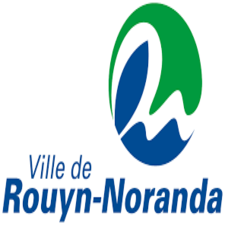Hypsometry
Type of resources
Topics
Keywords
Contact for the resource
Provided by
Formats
Representation types
Update frequencies
status
-

This hypsometric layer represents the relief of Quebec territory at a scale of 1/20,000. Level curves are taken from ** [topographic maps on a scale of 1/20,000] (https://www.donneesquebec.ca/recherche/fr/dataset/cartes-topographiques-a-l-echelle-de-1-20-000) **. They are generally at an equidistance of ten meters and, in some cases, they can vary between eight and twenty meters. This data layer includes contour lines and dimensional points as points and text. Each file covers an area of approximately 250 km2. The web service is produced using topographic data at a scale of 1/20,000 in the south and map data from Natural Resources Canada (CanVec product) at a scale of 1/50,000 in the north.**This third party metadata element was translated using an automated translation tool (Amazon Translate).**
-

The level curves are derived from a LiDAR survey carried out in May 2014. The equidistance is 25 cm, the absolute planimetric accuracy (XY) is of approximately 40 cm and the absolute altimeter accuracy (Z) is approximately 20 cm. The urban sectors covered are the urban perimeters of Rouyn, Noranda, Granada, Évain (partially), Lac-Dufault and the airport. **This third party metadata element was translated using an automated translation tool (Amazon Translate).**
-

Level curves on the territory of Lévis. The equidistance is 50 cm, produced from a LiDAR survey carried out in May 2017.**This third party metadata element was translated using an automated translation tool (Amazon Translate).**
-

These digital terrain models (DTM) offer a regional numerical representation of Quebec's relief based on altimetric (altitude) and planimetric (rectangular or geographic) data. They are the result of a collaboration between the Ministry of Natural Resources and Forests (MRNF) and Natural Resources Canada (NRCan) within the framework of the Agreement to produce an up-to-date digital map of northern Quebec and the creation of the product “National Hydro Network (RHN)” for the territory of Quebec. When integrated into a geographic information system, these models allow the implementation of multiple types of spatial analyses such as natural risks, landscape analysis, infrastructure implementation, etc. The MNTs are obtained as a result of hypsometric and hydrographic data processing that uses the concept of hydro-coherence consisting in interpolating altimetric values by ensuring a connected drainage network and an accurate representation of ridges and watercourses. The oriented RHN filament makes it possible to grade lakes and to control the altimeter descent of watercourses. The final product is a quality portrait of relief on a scale of 1/50,000. DNTs provide altitude values that are based on a grid with a resolution of 0.324 arcseconds in geographic coordinates, which corresponds to a resolution of about 10 meters in the field.**This third party metadata element was translated using an automated translation tool (Amazon Translate).**
-

High-resolution relief data produced from LiDAR surveys and limited to crop plots are particularly useful in the agricultural sector since they make it possible to model surface drainage in order to identify drainage problems or the risks of soil erosion. Agronomic interpretation will take advantage of this information not only in the form of the numerical terrain model and the shading, but also with the level curves, flow paths and basins located inside the cultivated plots, as delimited by the database of declared agricultural plots and productions (BDPPAD) of the Financière Agricole du Québec (FADQ). Level curves of 1 m covering the entire treated territory excluding cultivated plots (agricultural, forest, urban, etc.) are also available. These new data are the result of a collaboration between the MRNF and the MAPAQ, and they are offered thanks to the open valorization of data initially derived from LiDAR to the MRNF Forest Inventory Directorate (DIF). We hope that this data will support better soil and water management interventions, in order to mitigate the consequences of climate change, and to promote sustainable agriculture.**This third party metadata element was translated using an automated translation tool (Amazon Translate).**
 Arctic SDI catalogue
Arctic SDI catalogue